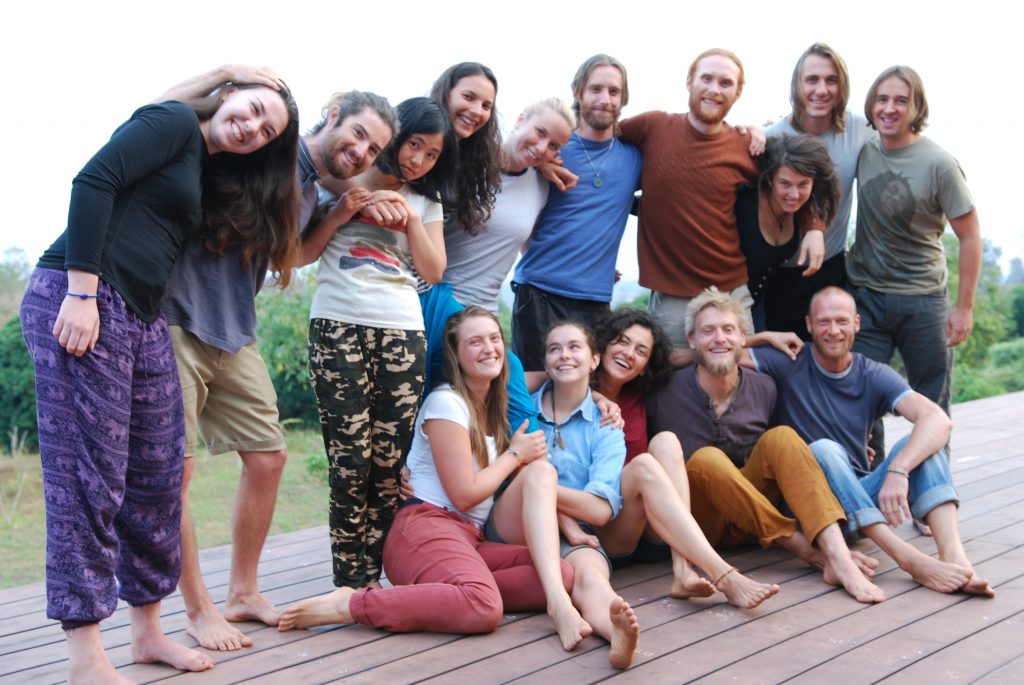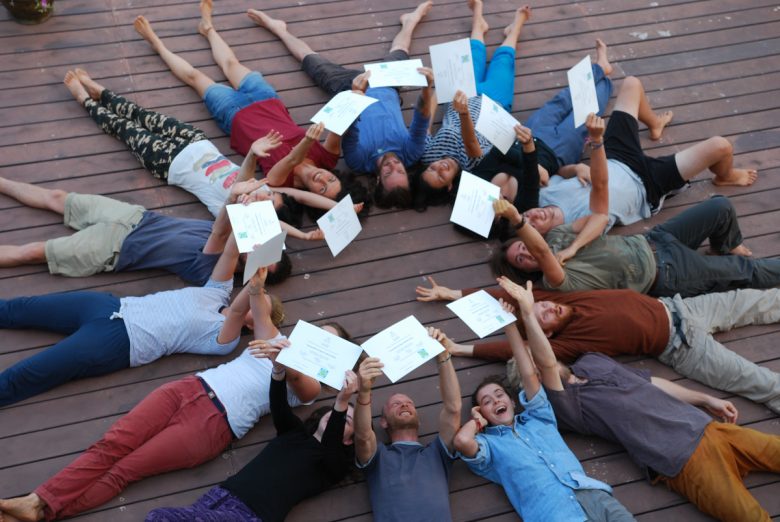This article is a review about the permaculture design course I attended in Thailand a few weeks ago. I wanted to write a review of this PDC, because the course was very important for me and I learned a lot. A PDC course like this includes at least 72 hours of teachings and it provides the participants with a permaculture design certificate, once they successfully completed the course. In the end of the course everyone had to present a complete site plan for a self chosen project. I chose to design the property of my parents and you can see the results here.
For about one year I was thinking to do a PDC, but back in good old Germany it is very expensive and the times did not really fit my schedule. So I was very happy to discover the opportunity that I could basically do this course wherever I would be in this world, because the certificate is internationally accepted. Then I found the PDC in Kailash Akhara on the news history at the WWOOF Thailand site and I knew that I would love to go there. The outlook of having more time (three weeks instead of two) sounded like a great option, because for me practice is very important and due to that extra week it was clear that we would have more time for practicing what we learned. The facilitators (this was a new word for me to use) that teached (or facilitated) this course where Bryan Newhouse, Ben Dunn and Brandon Bodhi Denton. You can read more about the full description of the course here.
In the morning sessions we would learn about the definition of permaculture, about the ethics and principles of this concept, we would learn about climates and microclimates, we would get to know many different techniques, we would talk about zoning, water management, composting methods, natural building, holistic management and other interesting things. Our teachers gave us a good overview about the basic knowledge that we will need to practice permaculture. But most of all we learned to see through permaculture eyes, see the connections between different elements in a permaculture design. Every component is serving more than one purpose and is giving and receiving from other objects. It´s all about seeing connections, potential, possibilities and imitating ecosystems. In the afternoon we did hands on practical work. We made mud bricks, we built a mud brick wall and we learned how to make a cob wall. We would learn about tree-cuttings, how to make earth for planting, how to make a vermicompost and many more things.
Our days where wrapped in a morning cycle where everyone would have the chance to share how they are doing and we would also make an evening circle where we could share the high and the lows of the day. We spent so much time together during these three weeks, that we became very close and had the possibility to actually experience community and sharing, which are big parts of permaculture.
One of the most important lessons for me was the one about natural building. We learned which kind of building techniques are best used in different climatic zones, what material to use and actually how to do it. We talked about earth bags, straw houses and how to build a dome (a house that has the shape of an igloo). After this particular lesson I was so exited about all this new information and full of energy that I had to run around senselessly. That never happened to me before. I felt so empowered because I just learned that it is actually possible to build your own house with natural material and I also knew now how to do it. That was really powerful for me.
What I especially appreciated during that course was that our teachers would try to show us as much of the structure and practice of permaculture without overloading us with details. Because once you know that something exists and you also know the context you can just learn the details when you need them.
For sure I could have also learned everything about permaculture from books and internet, but it would not have been the same. My experience is that when someone who is really interested in a topic tells you about it, besides the information that reaches your ear there is also a spark of enthusiasm that is transmitted. You can see in peoples eyes, when they spark and glow because they really put energy into what they tell you. So for me that was the most important thing I got out of this course. I felt immensely inspired. I felt inspired by all the information, all the people who made it possible that this information could spread out to me and most of all I felt inspired by our teachers. They would inspire me by teaching and living the life they live (practicing, teaching, travelling) and they showed me a perspective I did not see before and I am very thankful for that.
So for anyone who ever wishes to do a PDC I can highly recommend it. It will for sure leave you empowered, inspired and ready to implement permaculture in your life, wherever you live.

